Soccer: An Analysis of the Sport
Jan 31, 2019Recently, I had the opportunity to present to a local soccer club and their coaches on injury risk and reduction for the sport of soccer. In order to understand this, a “Needs Analysis” must be done. A Needs Analysis is a two-part analysis breaking down the sport into two components:
- Evaluation of the Sport
- Assessment of the Individual
Today, our primary focus will be on evaluating the sport itself. This can be further broken down into:
- Movement/Biomechanical Analysis – body and limb movement patterns and muscular involvement
- Physiological Analysis – required physiological characteristics such as strength, power, endurance, speed agility, etc.
- Injury Analysis – common sites for joint and muscle injury and causative factors
Movement & Physiological Analysis
Soccer is a very lower-body dominant sport involving the hip, knee and ankle joints and muscle groups including the quadriceps, glutes, hamstrings and calves. A soccer athlete must be able to run, jump, accelerate, decelerate, land, cut, kick, pass, head, shuffle, tackle – all while handling a ball and avoiding defenders. Oh, they also need the ability to sprint and jog throughout the duration of a 90+ minute game. Now, you’re talking about a dynamic athlete with a sound aerobic and anaerobic energy system. That’s A LOT.
Here’s a more thorough breakdown:
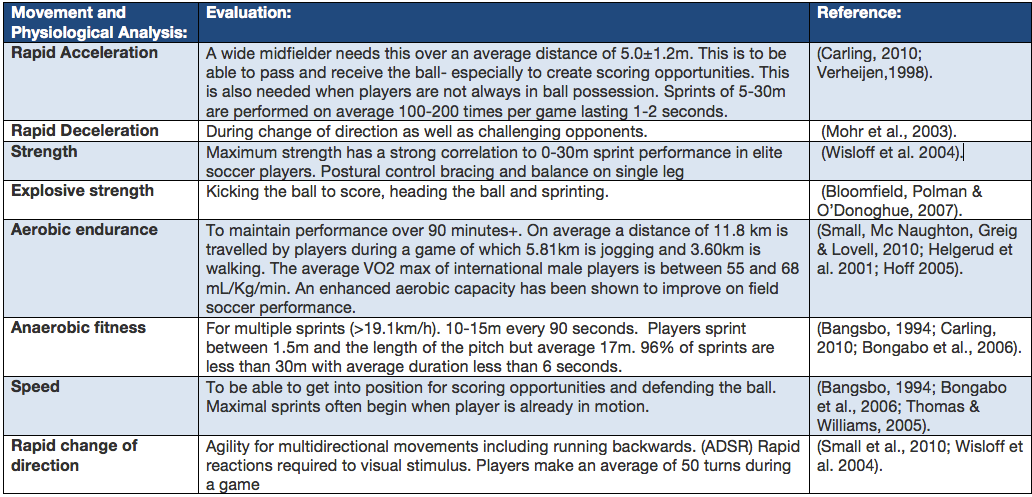
Injury Analysis
Sports injuries are inevitable. It comes with playing sports – exposure already puts you more at risk. You cannot prevent sports injuries, but you can help mitigate and reduce the risk of them happening – especially ones that are non-contact or overuse in nature.
Here’s a breakdown of the most common injuries in soccer:
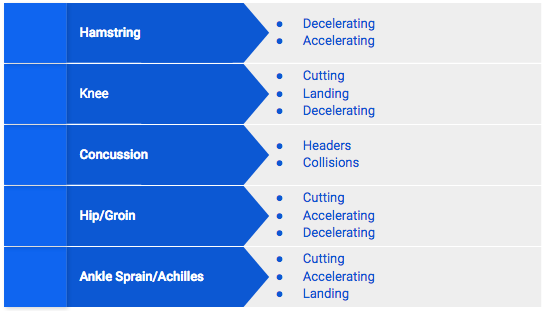
A study done in 2017 by Khodaee et al. tracked detailed information on injury rates among high school soccer players over a 10-year period (2005 – 2014). You can see those below broken down by gender and injury diagnosis.
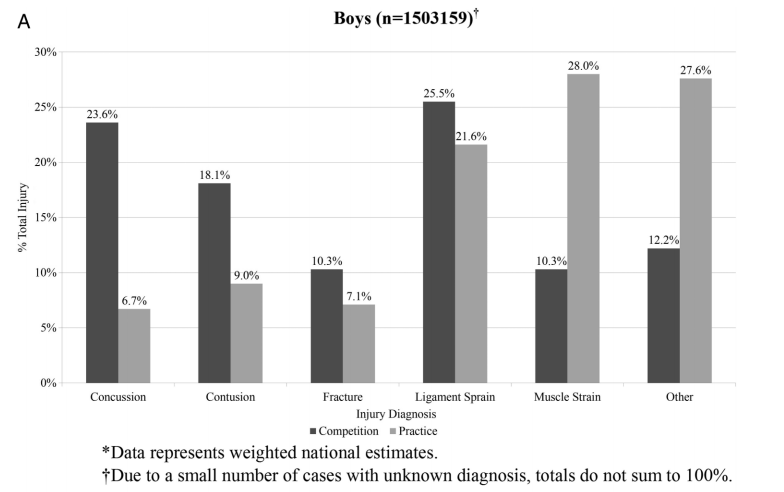

Muscle strain, ligament sprain and concussions are highest as expected.
What’s most interesting is the girls’ ligament sprain – very high for both practice and competition as compared to the boys’ group. Females are 2-5 times more likely to tear their ACL than males in a similar sport. There are a lot of factors that play into this and nothing is definitive. We do know that strength and neuromuscular control are big modifiable factors from an injury risk standpoint.
In another study from 2015, Waldén and company analyzed 39 videos for movements related to non-contact ACL injuries in professional soccer players. They found that pressing, kicking, and heading were the 3 most common movements in relation to ACL injuries.
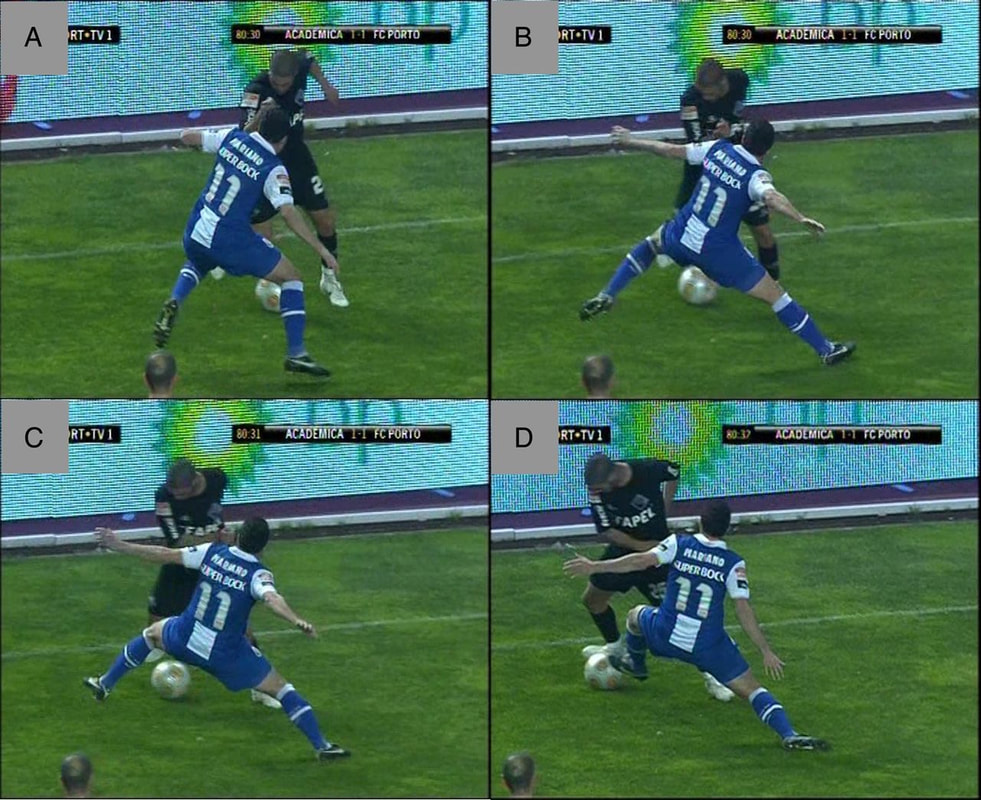
Pressing
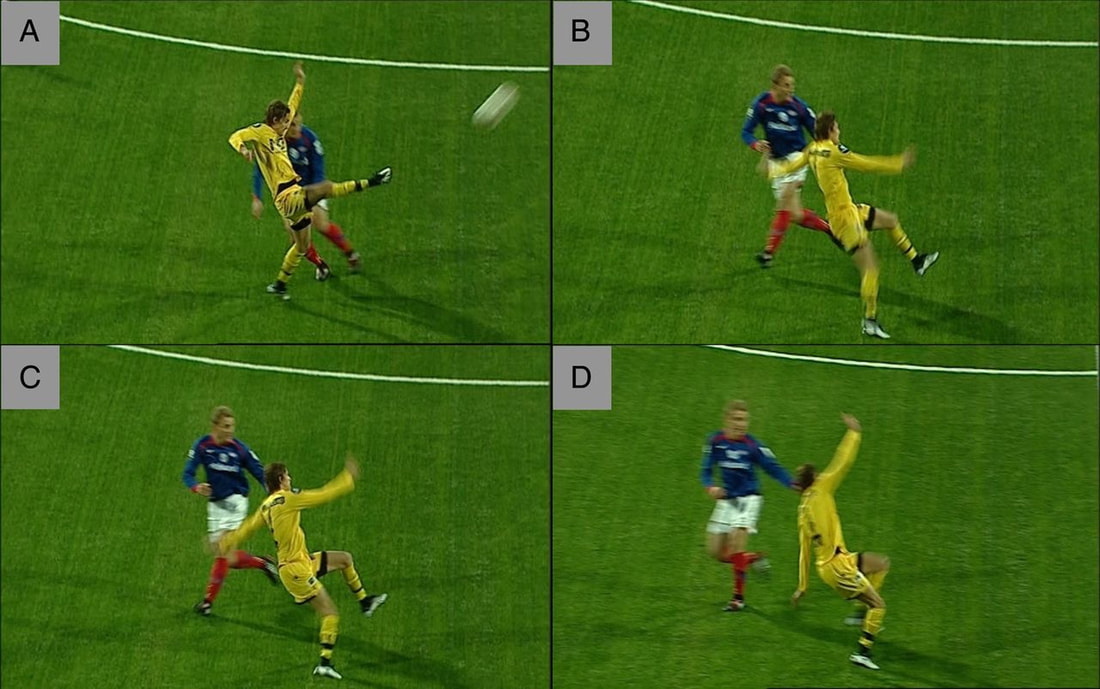
Kicking
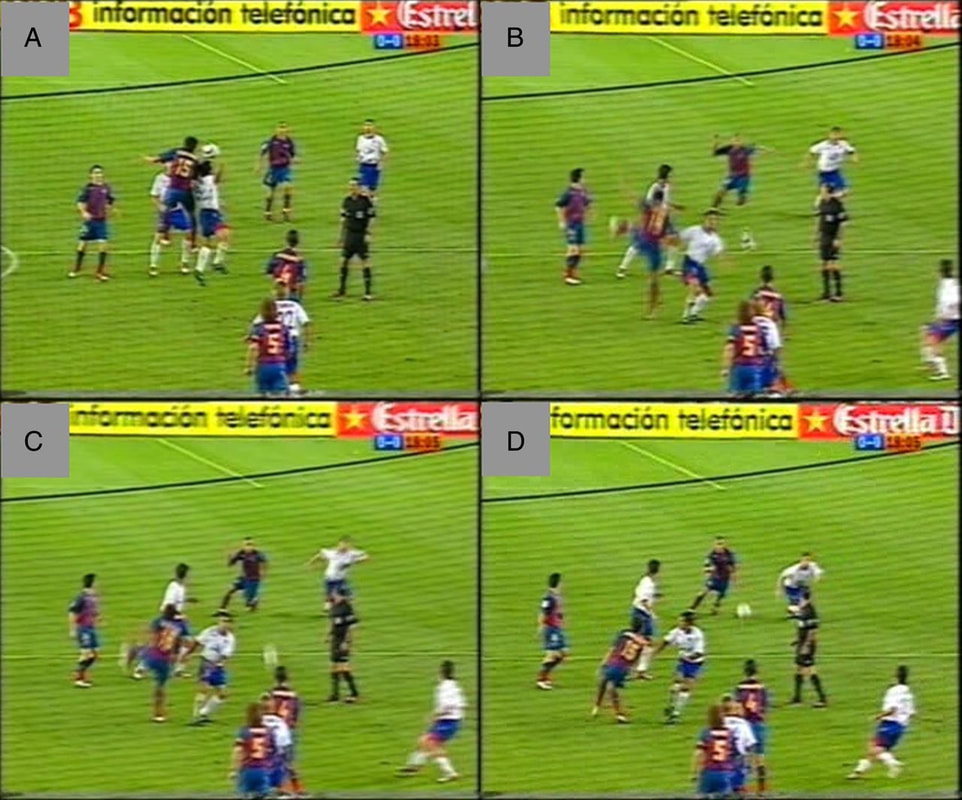
Heading (check that right leg in D - ouch)
Cool, so now what do we do with all of this? Make some superhuman soccer athletes.
Have a plan in place to address these different components. It’s important to create a program for these athletes to develop these athletic characteristics – i.e. lower body strength, power, repeated sprint ability, cardiovascular endurance, change of direction and reactive agilities. Injuries happen all the time in soccer, but if we know what joints and muscles are most at risk, then we can better prepare these tissues to withstand the stress of the sport and build more resilient and robust athletes.
Cheers,
Dr. Ravi, DPT
Sources:
Baechle, Thomas R., and Roger W. Earle. Essentials of Strength Training and Conditioning. Champaign, IL: Human Kinetics, 2016. Print.
Turner, E., Munro, A. G., & Comfort, P. (2013). Female Soccer: Part 1—A Needs Analysis. Strength & Conditioning Journal, 35(1), 51-57.
Let us help you figure out to live your best active life today!
Remember, Movement is Medicine!

